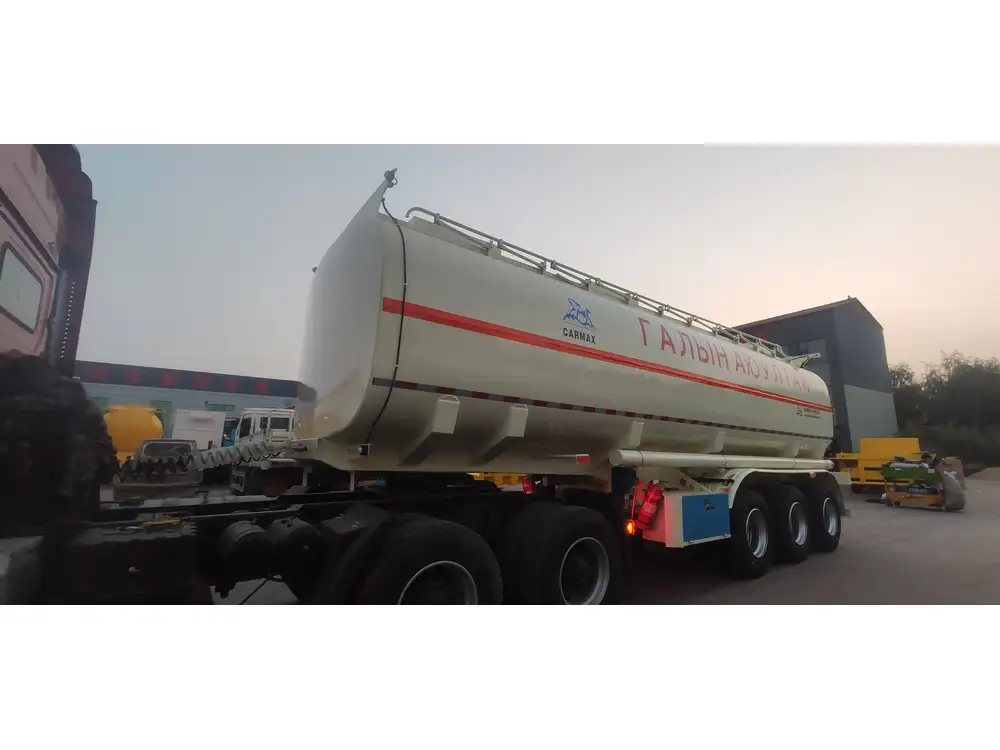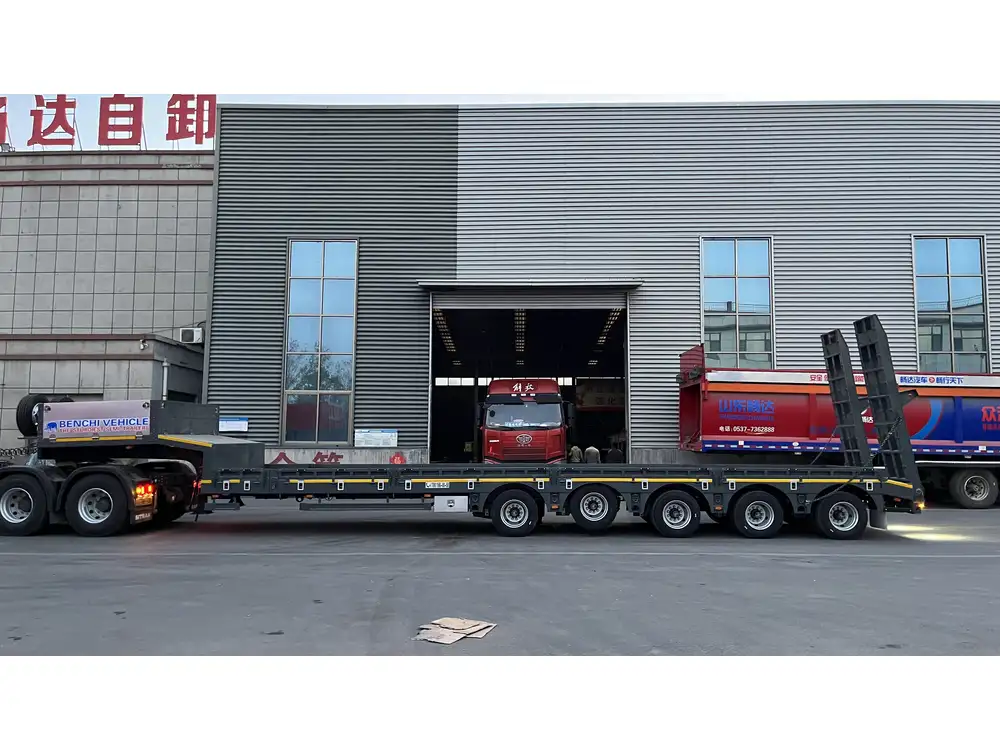The Origin of Semi-Trailers: A Historical Perspective
The term “semi-trailer” has evolved from the early days of freight transport where the need for larger load capacity and flexibility in transportation became paramount. The “semi-” prefix signifies that these trailers are not full trailers; they rely partially on a towing vehicle for support.
The Inception of the Semi-Trailer
The first semi-trailer was invented in the 1910s. The need for a more efficient means to transport goods across long distances became increasingly essential with the rise of industrialization. Traditional trailers were fixed, but inventors at the time realized that a trailer that could detach would allow for quicker loading and unloading—thus enhancing productivity.
| Year | Development |
|---|---|
| 1910s | Invention of the semi-trailer concept |
| 1930s | Introduction of standardized semi-trailer designs |
| 1950s | Growth in long-haul trucking and transportation logistics |

Semi-Trailer Configuration: Anatomy of a Semi-Trailer
Understanding the structure of a semi-trailer also provides crucial insight into its name. Semi-trailers are distinguished by their unique design, which consists of:
- Coupling Mechanism: This connects the trailer to the tractor unit. The most common type is a fifth wheel coupling.
- Axles and Suspension: Semi-trailers typically have two or more axles that distribute weight effectively.
- Load-Bearing Area: Unlike full trailers, a semi-trailer features a portion of its weight resting on the towing vehicle.
Differentiating Between Trailers and Semi-Trailers
| Feature | Trailer | Semi-Trailer |
|---|---|---|
| Support | Supported entirely by axles | Partially supported by the tractor |
| Towing Vehicle | Has its own coupler | Coupled to a truck or tractor |
| Stability | More stable when fully loaded | Greater maneuverability; less stable when disconnected |
The Semi-trailer vs. Full Trailer: What’s the Difference?
To grasp why it’s called a semi-trailer, one must look at the fundamental differences between semi-trailers and full trailers.

A Closer Examination of Trailer Types
Semi-trailer:
- Design: A semi-trailer lacks a front axle and is supported by the rear axles, thus the prefix ‘semi.’
- Usage: Primarily used in long-haul freight transport.
- Maneuverability: Offers greater maneuverability due to its design, which allows it to pivot more readily than a full trailer.
Full Trailer:
- Design: A full trailer has both front and rear axles and is completely stable when detached.
- Usage: Commonly utilized for short-haul transport and deliveries.
- Maneuverability: While stable, it lacks the same pivot capabilities as a semi-trailer, restricting its navigation in tight spaces.

Key Advantages of Semi-Trailers: Operational Benefits
Flexibility and Adaptability
The semi-trailer’s design allows for a variety of body styles, making them suitable for transporting different types of cargo. For instance:
- Flatbeds: Ideal for heavy equipment.
- Reefer Trailers: Designed for temperature-sensitive goods.
- Tanker Trailers: Used for transporting liquids.
This adaptability is why semi-trailers dominate the trucking industry.
Cost-Effectiveness
Employing semi-trailers can lead to lowered operational costs. Given their ability to maximize load sizes and efficiency while reducing the wear and tear on vehicles, companies can enjoy better profit margins.
| Benefits | Semi-Trailers | Full Trailers |
|---|---|---|
| Load Capacity | Higher due to partial vehicle support | Limited by design |
| Fuel Efficiency | Better due to aerodynamic designs | May face wind drag |
| Maintenance Costs | Potentially lower from reduced wear | Higher due to full-support design |

Legal Implications and Regulations Surrounding Semi-Trailers
Weight Limits and Compliance
Transporting goods via semi-trailers is subject to strict legal regulations governing weight limits. Each country and state sets its own guidelines, impacting the number of axles, weight distribution, and safety features.
- Federal Motor Carrier Safety Administration (FMCSA): In the U.S., the FMCSA oversees weight and safety regulations for semi-trailer operation.
- International Standards: Globally, standards vary; for instance, the European Union has specific dimensions and weight limits for semi-trailers to promote safety and compliance.
Insurance and Liability Concerns
Navigating the landscape of insurance and liability can be daunting when it comes to semi-trailers. Companies must ensure they have adequate coverage for cargo, damages, and accidents that may occur during transport, particularly since semi-trailers operate on public roadways.

The Future of Semi-Trailers: Trends and Innovations
Technology-Driven Changes
The evolution of technology is set to drastically change the landscape of semi-trailer transport. Key innovations to watch include:
- Telematics Systems: Allow for real-time monitoring of trailer conditions, optimizing logistics and reducing costs.
- Electric and Autonomous Trailers: The rise of electric trucks and trailers is making semi-trailer logistics more environmentally friendly while enhancing efficiency.
Sustainability Initiatives
As companies strive for greener fleets, semi-trailers are being designed with sustainability in mind. Modern materials and aerodynamic improvements aim to reduce drag and increase fuel efficiency—becoming invaluable for environmentally-conscious businesses.

Conclusion: Why Understanding Semi-Trailers Matters
Embracing a deeper knowledge of why it’s called a semi-trailer and its operational implications is essential for both manufacturers and operators alike. From its unique naming convention and structural advantages to the intricate legal framework surrounding its use, the semi-trailer remains an indispensable asset in modern transportation.
Investing in quality semi-trailers can enhance your operational efficacy, reduce costs, and improve your bottom line. As the industry moves forward, staying informed about advancements in technology and regulations will ensure you are well-equipped to navigate the complexities of the logistics landscape.
Understanding semi-trailers isn’t just about the terminology; it’s about seizing opportunities for growth and streamlining the way freight is transported globally.
By providing detailed insights into every facet of semi-trailers, including historical context, structural features, comparisons, and future trends, we’ve created a valuable resource aimed at not only informing but also engaging potential users and stakeholders in the industry.



